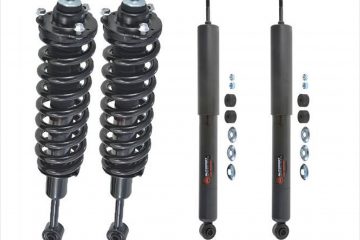As an auto mechanic, one of the most important safety features of any vehicle is the braking system. When it comes to the braking system, brake pads play a vital role in ensuring the safe and efficient stopping of a vehicle. In this article, we’ll take a detailed look at how brake pads work and what you need to know about maintaining them.
What are brake pads?
Brake pads are a vital component of the braking system that help to slow down or stop a vehicle. They are typically made of a hard, heat-resistant material such as ceramic, organic or metallic materials. The brake pads are mounted on the brake calipers and press against the brake rotor when you press the brake pedal.
How do brake pads work?
When you apply the brakes, hydraulic pressure is generated in the brake lines, which causes the brake calipers to squeeze the brake pads against the rotor. This creates friction, which converts the kinetic energy of the vehicle into heat, bringing the vehicle to a stop.
The brake pads are designed to wear out over time, as they are subjected to high levels of friction and heat. As the brake pads wear down, they become less effective at stopping the vehicle, and will eventually need to be replaced.
Types of brake pads
There are several different types of brake pads available on the market, including ceramic, organic and metallic brake pads. Each type of brake pad has its own set of advantages and disadvantages.
Ceramic brake pads are typically the most expensive, but they offer superior performance and are much quieter than other types of brake pads. They also produce less dust, which makes them a good choice for luxury vehicles.
Organic brake pads are the most common type of brake pad, and are generally the least expensive. They are made of a combination of materials, including rubber, carbon, and fiberglass, and are a good choice for everyday use. However, they tend to produce more dust than other types of brake pads, and can wear out more quickly.
Metallic brake pads are made of a mixture of metals, including copper, iron, and steel. They are often used in high-performance vehicles, as they offer superior stopping power and are able to withstand high levels of heat. However, they can be noisy and produce more dust than other types of brake pads.
Brake pad maintenance
Maintaining your brake pads is essential to ensure the safe and efficient operation of your vehicle. Here are some tips for keeping your brake pads in good condition:
- Check your brake pads regularly – You should inspect your brake pads every 12,000 miles or so. Look for signs of wear, such as thinning or uneven wear. If you notice any problems, have your brake pads checked by a professional mechanic.
- Avoid hard braking – Hard braking puts a lot of stress on your brake pads, and can cause them to wear out more quickly. Try to avoid sudden stops, and give yourself plenty of time to slow down.
- Use high-quality brake pads – Investing in high-quality brake pads can help to extend the life of your braking system, and ensure that your vehicle stops safely and efficiently.
- Replace worn brake pads promptly – If you notice that your brake pads are worn down, have them replaced as soon as possible. Worn brake pads can reduce the stopping power of your vehicle, and can even cause damage to your brake rotors.
Conclusion
In conclusion, brake pads are a vital component of the braking system, and play a critical role in ensuring the safe operation of your vehicle. As an auto mechanic, it is important to understand how brake pads work, and to educate your customers on the importance of maintaining their braking system. By following these tips, you can help your customers keep their brake pads in good condition, and ensure that their vehicle stops safely and efficiently.



